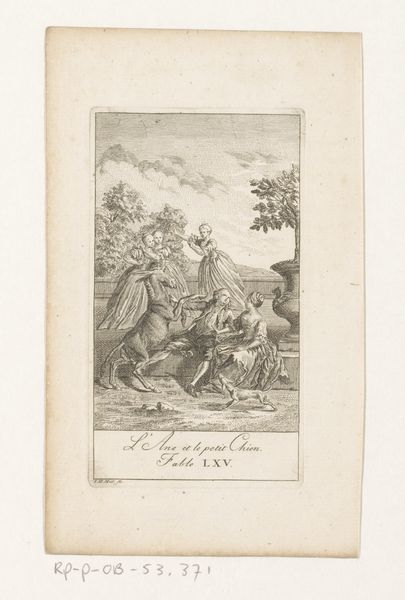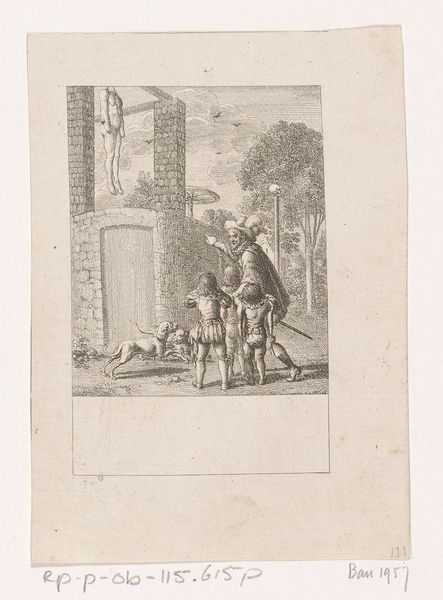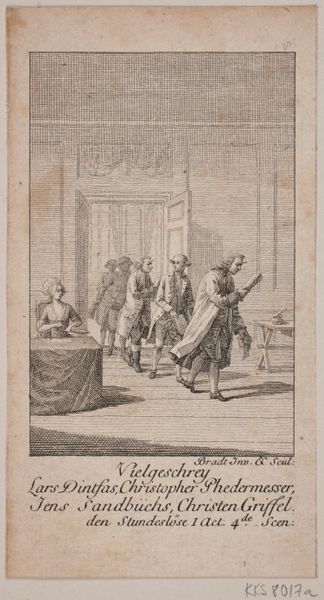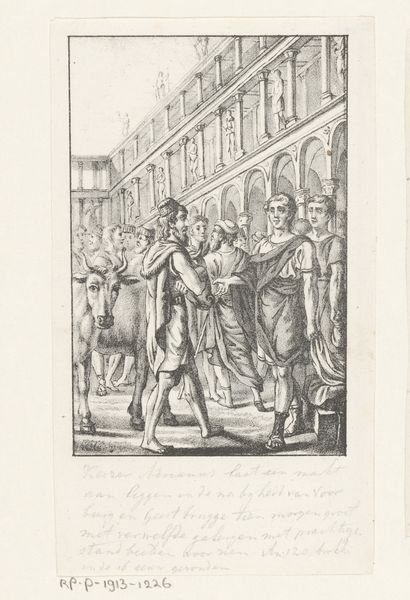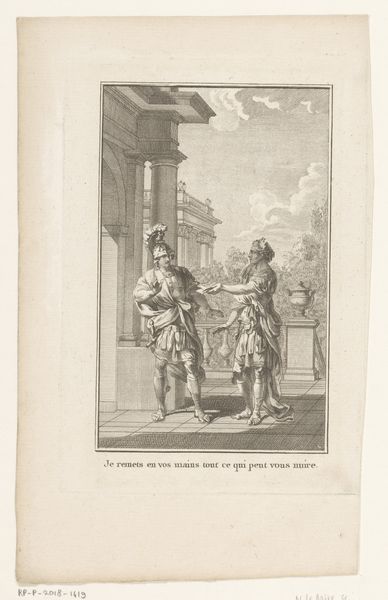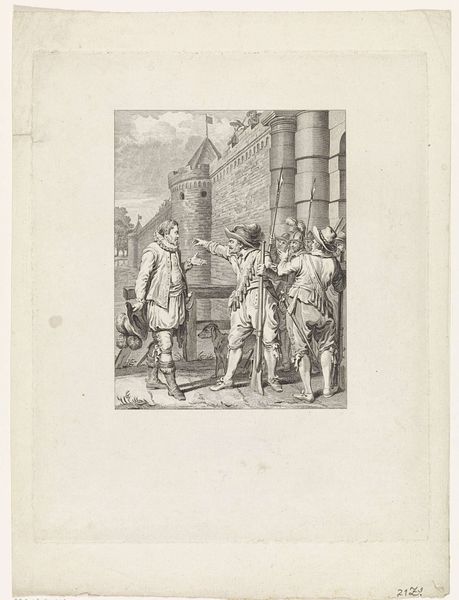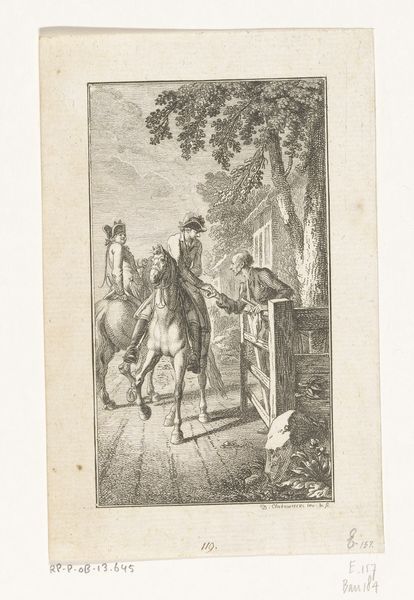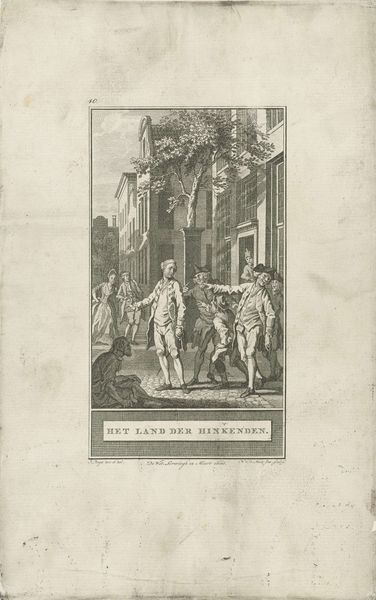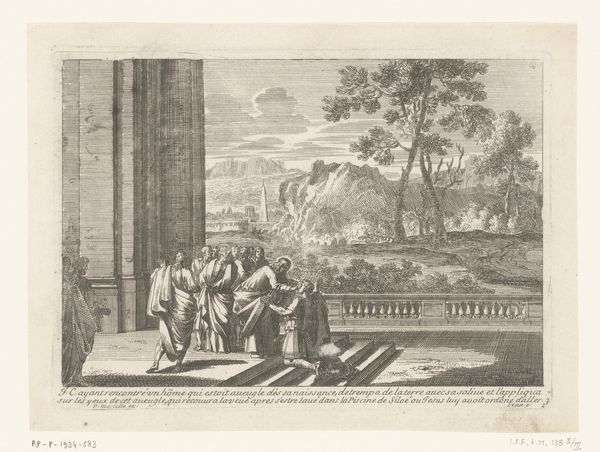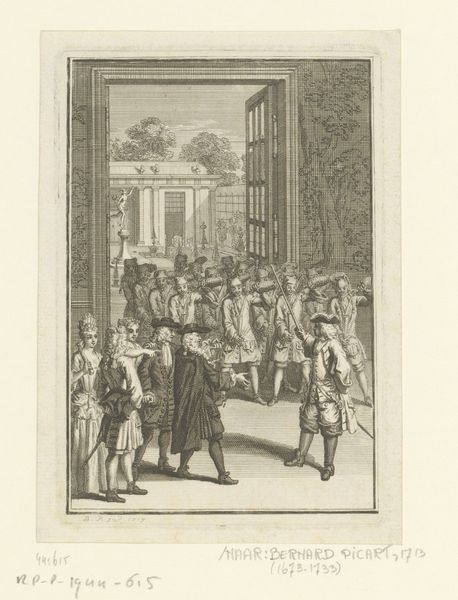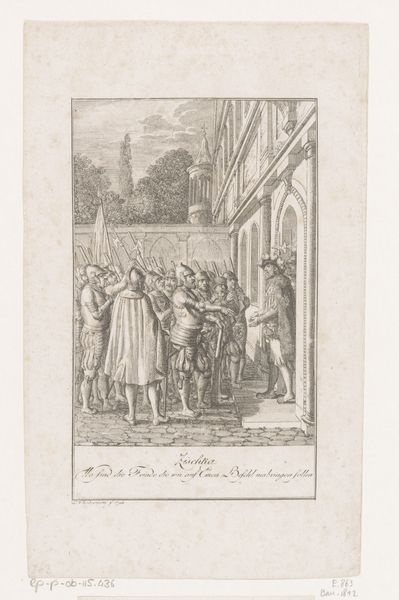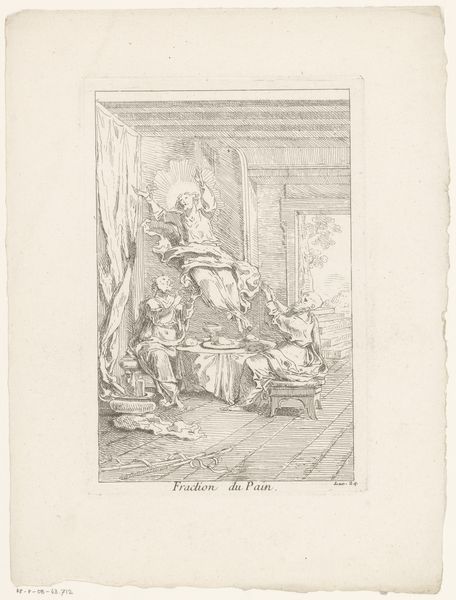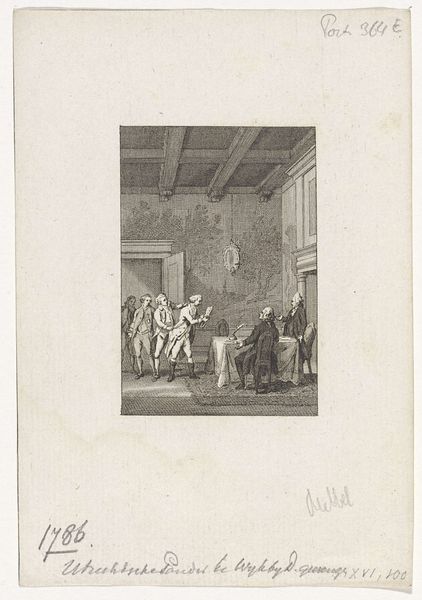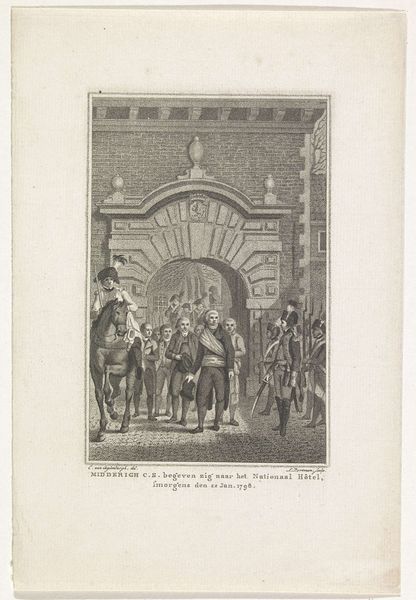
print, engraving
#
narrative-art
#
baroque
# print
#
old engraving style
#
genre-painting
#
engraving
Dimensions: height 142 mm, width 81 mm
Copyright: Rijks Museum: Open Domain
Curator: This engraving, "Fabel van de charlatan," or "Fable of the Charlatan," created in 1758 by Johann Heinrich Meil, presents a scene rife with social commentary. It's quite small, a print intended, I imagine, for widespread circulation. The delicate lines create a world both ordered and, dare I say, a bit sly. Editor: My initial impression is of understated elegance and pointed observation. The crisp lines of the engraving yield a very precise, contained narrative, yet there’s an inherent theatricality in the poses and setting. It makes me think of the rise of skepticism during the enlightenment. Curator: Exactly! Meil masterfully employs the engraving technique to create detailed character studies. The lines dictate the fabrics, the faces and their expressions—almost a material performance captured on a metal plate then reproduced en masse on paper. Notice how the clothing differentiates the individuals, almost visualizing their social roles, even the charlatan. Editor: And what about the space, this elegant facade? Its imposing presence underscores the very institutions against which our charlatan likely operates. The architecture, with its ordered columns and curved walls, represents the establishment. It gives the charlatan's deceptive craft a visible counterpoint; it also implicates the structures upholding social inequalities. Curator: It's fascinating to consider how the labor of producing this print contributed to its meaning. Engraving was a skilled craft, making these satirical views available to a wider audience beyond the elite. The material object itself was part of disseminating potentially subversive ideas. It also provided employment. Editor: I agree. Think, too, about how these images, spread widely, contributed to public discourse, solidifying perhaps a sense of shared social consciousness. These prints become little cultural actors, shaping how people understand power, deception, and perhaps their own agency. Were these circulated and consumed primarily in urban areas where those dynamics played out with much bigger force? Curator: Intriguing. Reflecting on "Fable of the Charlatan," it prompts us to reconsider how even seemingly small, reproduced images carried significant material and social weight. Editor: Indeed, viewing this print offers a unique window into the visual language of the Enlightenment and its complex relationship with power and social mobility.
Comments
No comments
Be the first to comment and join the conversation on the ultimate creative platform.
